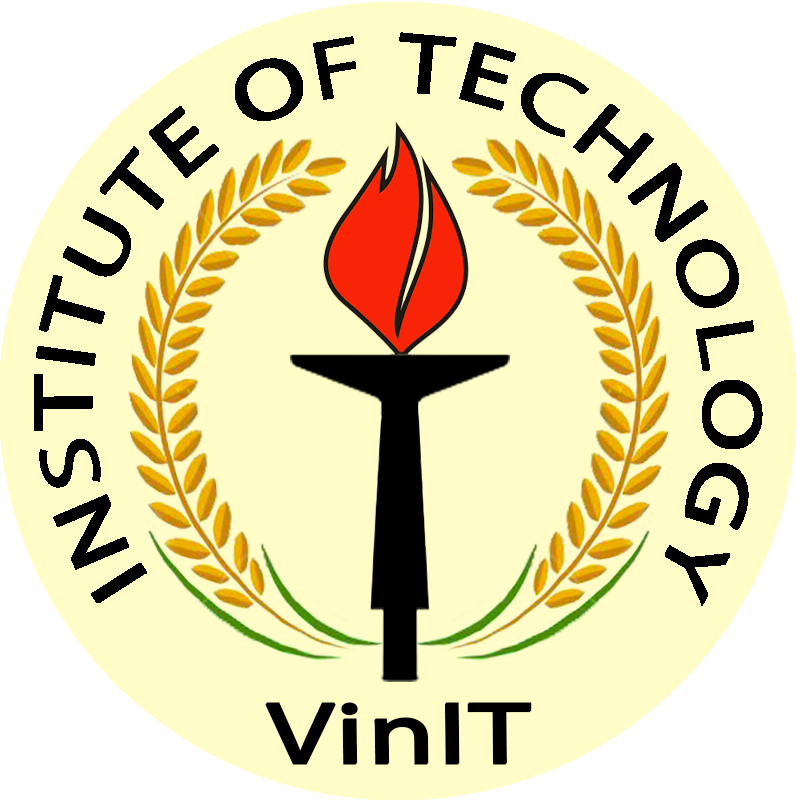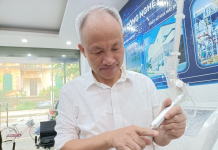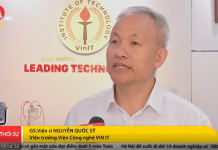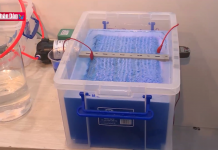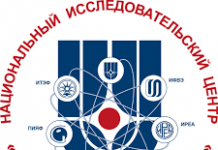Abstract
Wastes emerged to be an opportunity to generate valuable materials and products for human demands. Particularly in non-developed countries, recycling of resources have become a prominent revenue source for society. Numerous researches are conducting and developing to manage wastes by new technologies over the world day by day. Present editorial paper focuses on recent advances and plasma technology applications in order to manage the wastes. Therefore, it comprises a review manuscript encompassing the plasma reactors for converting and following by depositing some new products employing Chemical Vapor Deposition (CVD). By the way, it has been attempted to explain the procedure used and the wastes converted to synthetic gas (syngas) for diamond deposition operation by gathering new studies and techniques developed in this field.
Plasma Technology and Waste Management
Materials can be appeared in any of fourth states such as solid, liquid, gas and plasma states. Plasmas forces are being generated via motivating the energy content of matters employing mechanical, thermal, chemical, radiation, rays, electrical, nucleus, energies, combination of them, energies of thermal, mechanical (explosives) depend on type of application as cold or hot plasmas. Plasma forces are the most prominent techniques to remove and retrieve waste materials in any states. The conversion of miscellaneous organic components to macromolecular thin layers up to make up highly and less cross-linked polymers, more highly functionalized films and modified surfaces has been realized by plasma forces. Also, thermal plasma is being applied in the reformation of natural gas, H2 generation, fuel cells and H2-rich gases and alterations in the state of matter. In many reports plasma forces assigned for gasification of different wastes such as rubbish derived fuel (paper, biomass and plastic), glycerol as a by product of biodiesel steam, biomass, plastics, paper, Aluminum foil, cloth, rubber, wood, tree branches, metals, concrete, bricks, tiles and ceramic, glass, cellulose, bitumen, coal, pet-coke, existing Hydrocarbons (HCs) in gases of hazardous wastes and raw waste vegetables mixed with raw wood; using Micro Wave (MW), gliding arc, plastron, Radio Frequency (RF) plasma, plasma torch and other thermal plasmas. The output gases utilized for lots of applications as syngas.
Moreover, the available results revealed that performance of both conventional and modern plasma gasifiers are identical and equal to 100% elimination efficiency for output gases derived of gasification process from coal, tire, Municipal Solid Wastes (MSW), algae, treated wood, pine needle and plywood such as HCN, SO2, NH3. Also, it was perceived same elimination efficiency for CH4, H2S and SO2 in conventional plasma gasifiers and for S, COS, C2H2 and C (solid) by modern plasma gasifiers. On the other hand, there is a significant rise for both gases of H2 and CO values using modern plasma gasifiers in comparison to conventional types. Employing plasma pyrolysis, gasifiers and plasma treatment operations the most likely components that made up from carbonaceous matters are CH4, CO, H2, CO2 and H2O.
Thermal-plasmas are induced by plasma torches or jets also called non-equilibrium Plasmatrons and plasmatron which are different in terms of induction source as Direct Current (DC), Alternating Current (AC) and RF. Existing escalated temperatures is caused available gas within the reactor partially ionized and electrically dissociated in gases stream of HCs fuels and air or other oxidants in order to reformation of HC fuels into H2 rich gases. Employing catalyst (like nickel based catalyst on alumina and united Catalyst C-11) within a Plasmatrons and plasmatron reactor procures an important role as a fuel preprocessor so it can vaporize even heavy HCs like bio-fuels and waste oils. The thermal efficiency of H2 formation via Plasmatrons and plasmatron of CH4 breakdown reaction on an industrial scale obtained around 70–85% and for HC fuels reported approximately 100%, for raw products including wastes from food industry, oils, waste agricultural biomass (animal wastes, municipal solid wastes, crop residues, short rotation woody crops, agricultural wastes, sawdust, aquatic plants, short rotation herbaceous species, waste paper, corn, and etc) , and fuels derived from fossil storages such as coal is approximately identical. Monitoring the Plasmatrons and plasmatron output gases revealed to exist highly enriched syngas such as H2-35%; N2-47%; CO-3%; CO2-13%.
The gases composition proportion by employing thermal plasma for MSW ameliorated to around 40, 12.3, 40.3 and 7.4% for CO, CO2, H2 and N2. These amounts for coal were obtained to be about 23, 25, 48 and zero by MW plasma as well as 4% for CH4 respectively. Waste tires combustion by RF plasma yields CO (21%), CO2 (14.9%), H2 (48.5%) and CH4 (14.8%). The solid waste conversion percentage has been estimated about 86.8%, 65-99% and 32.5-88.4% for thermal, MW and RF plasmas respectively.
The dissociation of HCs to H2 and carbon species appeals versatile practices into thermal, catalytic (metal and carbon-based) and plasma technology some of aforementioned processes can potentially generate a flux of high purity H2. The catalytic approach encompasses metal and carbon-based catalysts while plasma-based conversion pertains on thermal or non-thermal techniques. National Research Center of Kharkov Institute for Physics and Technology researchers has implemented equipment for the deposition of hydrogenated diamond-like antifriction coatings in vacuum-arc discharge with graphite cathode and glow discharge plasma in HCs ambient. These products have proved themselves to be effective at industrial sites in Ukraine, Russia, and Iran. Basic technical parameters of the generator are characterized by line voltage 220 V, power supply current 5 A, voltage pulse amplitude up to 2.5 kV, at least load resistance of plasma about 200 ohm, pulse duration 6, 10 and 20 μs and pulse repetition frequency 0.5-12 kHz.
Variety of plasma CVD reactors exploited to deposit diamond via introducing different precursors such as diamond lattice planes, HCs such as C2H2, C2H4, CH4, O2; CO+H2; Propylene/ O2; Xe (Ar)/H2/CH4; interstellar; CH4 /CO2/H2; (CO, Ni, Cu, Ag and Mn)/ CH4/graphite; CH4//H2/Ar; CH4, H2, carbon atoms; C2H5Cl+H2; electrolysis of acetates for forming both of CH30 and H0; ethanol, hydrogen, single crystal silicon and WC-Co alloy; CH4/Ar/N2; acetylene/O2; Fe Ni alloy – carbon and NaN3; acetic acid and water as electrolyte; Ar, N2, O2, CO2, C2H2, CH4, H2 and their mixtures; Ar-rich Ar/H2/CH4; H2/Ar/CH4; H2-rich H2–CH4 mixture; liquid alcohol (90 ml of methanol and 10 ml of ethanol); CCl4 as the carbon source; oxy-fuel; mixtures of CH4, and liquid (CH3)3SiOSi(CH3)3); liquid CH4, ethanol, methanol, acetone, acetylene, diethyl ether, trim ethylamine and CO2; C2H2 and N2. By the way, using these precursors individually resulted to form the mono and Nano-crystalline diamond films, high-quality diamond, highquality epitaxial crystals, carbon clusters, Nano/micro over layer framework, diamond like carbon, epitaxial diamond nucleation, ultrafine diamonds and hexagonal diamond films by plasma reactors.
Diamond formation by CVD employs low pressure (around 1.35 meter) by bonding radicals of both methyl, hydrogen and etc. make up diamond layer in a steady state reaction at 700- 1200°C using above named precursors of C, H2 and activator. Also, variety of plasma reactors can be used for diamond deposition operations such as high frequency plasma, MW, Glow, laser, AC, Plasmatrons and plasmatron, DC, flame etc. In order to conduct the reaction the precursors depend on their sources with appropriate ratios are introduced into the reactors. The presence of less percentages from H2O, O2, CO2, N2 and CO are recommended but the proportion from injected gases is considerable to run the reactors. To make up a thin layer of diamond on the substrate some factors play the utmost role such as specific energy requirement, specific energy consumption, flow rate, power input, gas composition, deposition ambient, temperature, pressure, bias voltage and radicals selectivity. The results of researches have been reported the growth rate from 0.1 to 10 micrometers per hour and up to 100 micrometers per hour pertaining on substrate and type of plasma reactor applied.
Incorporation of output gases components (CO, CH4, CO2, H2 etc.) and employing appropriate temperature and pressure variables it is indispensable to rise the diamond growth or deposition rates. Diamond CVD technology underpins much easy opportunity to integrate miscellaneous sources. By the way, the atmospheric plasma torch possesses for the design of small and low-cost plasma sources. The further endeavors on the thermal characterizations of diamond films derived through variety of gas combinations have evolved that the prominent performance and quality achieved by utilizing a H2-rich, H2–CH4 ambient. Therefore, plasma technology posed to be a powerful technology to handle greenhouse gases emissions and paving the way for green chemistry and value-added products.
Syeda Azeem Unnisa, Malek Hassanpour
imedpub.com
